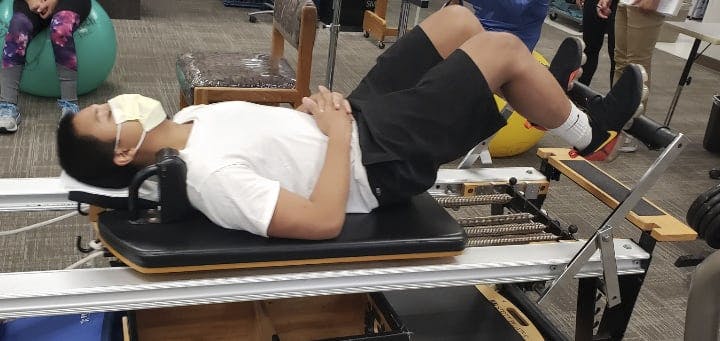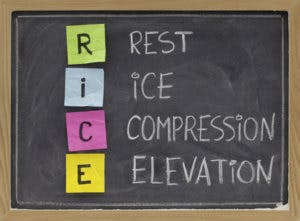It’s not just about food
When you hear the words rice and meat, we won’t blame you for thinking about food!
In the physical therapy world, the RICE method (rest, ice, compression, and elevation) has long been the recommended treatment for sports injuries. It is a recognized way to handle injuries, but recent reports suggest that ice and complete rest might delay recovery. Complete rest causes the muscles surrounding the injury to tighten, causing the potential for further injury once the activity is resumed. Though ice is useful in the short window immediately after the injury, 48 hours, it can impede the healing process over time.
After RICE….you should start thinking MEAT
MEAT stands for “movement, exercise, analgesics, and treatment”.
The theory is simple. To recover as quickly as possible from an injury, continue to move the affected joint as much as possible throughout the recovery period. Use common sense and remain within the limits of pain. Your body will tell you what it can, and cannot handle. The inflammation following an injury is part of the body’s natural healing process. Increased blood flow to the area that helps repair the damaged tissue. The continued application of ice to an injury after the first few hours could in fact, a hindrance to this natural healing process.
MEAT is good for the body
M is for Movement
Maintaining range of motion in the injured joint is an important aspect of recovery. Your physical therapist will guide you regarding specific do’s and dont’s with exercise. As a general rule, the more you move, the quicker you will heal. Listen to your body, since pain is an indication that something isn’t right. Your therapist will help you maintain mobility in the joints surrounding the injury. This will reduce the formation of scar tissue and decrease recovery time.
E is for Exercise

As the pain reduces, you will be encouraged to increase the duration and intensity of exercise under the watchful eyes of the physical therapist. A progressive routine of exercises will increase strength, improve balance and facilitate recovery. The primary objective during this stage is to promote healing while avoiding re-injury.
A for Analgesics
‘Analgesic’ is a medical term for pain relieving medication. It is best to consult with your physician to determine the most appropriate medications. Your doctor may recommend that you start with over-the-counter medication. If it is not effective, your doctor may prescribe prescription medications including steroids.
T is for Treatment
A physical therapist plays an important part in long-term recovery following any injury. Physical therapy treatment includes a variety of procedures and modalities, including therapeutic exercise, ultrasound, manual therapy and neuromuscular re-education using advanced techniques. A physical therapist can restore, retrain and improve the joints and muscles in the human body.
If you need help recovering from a sports injury contact us today. We are here to help!

